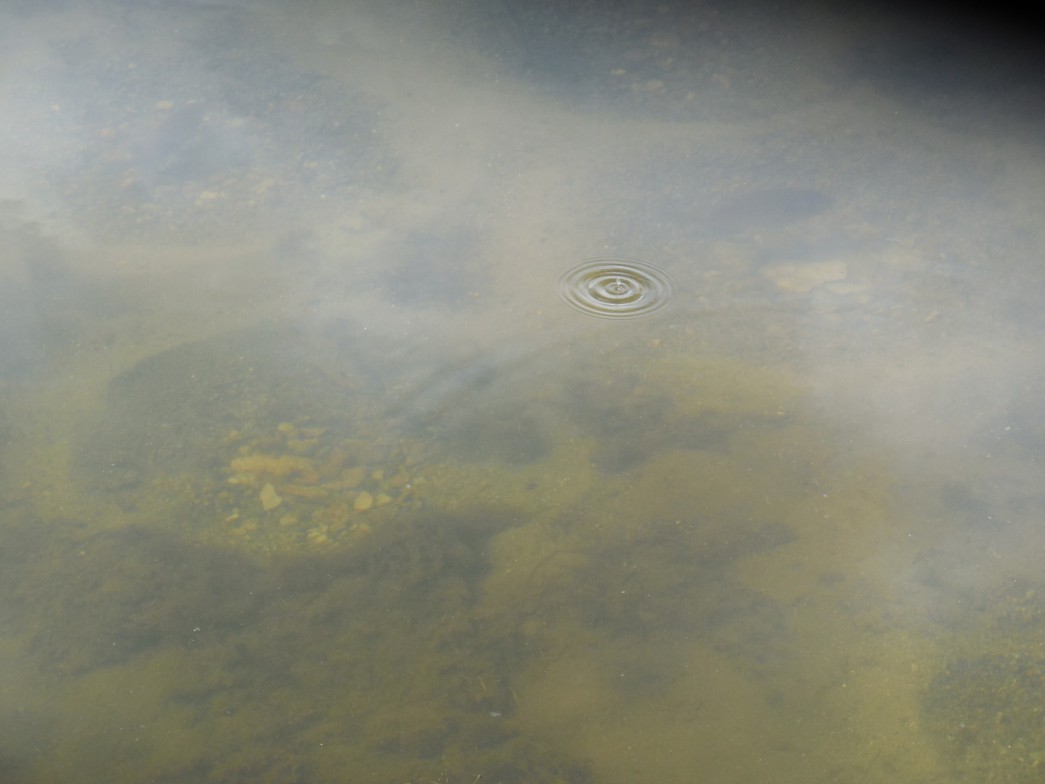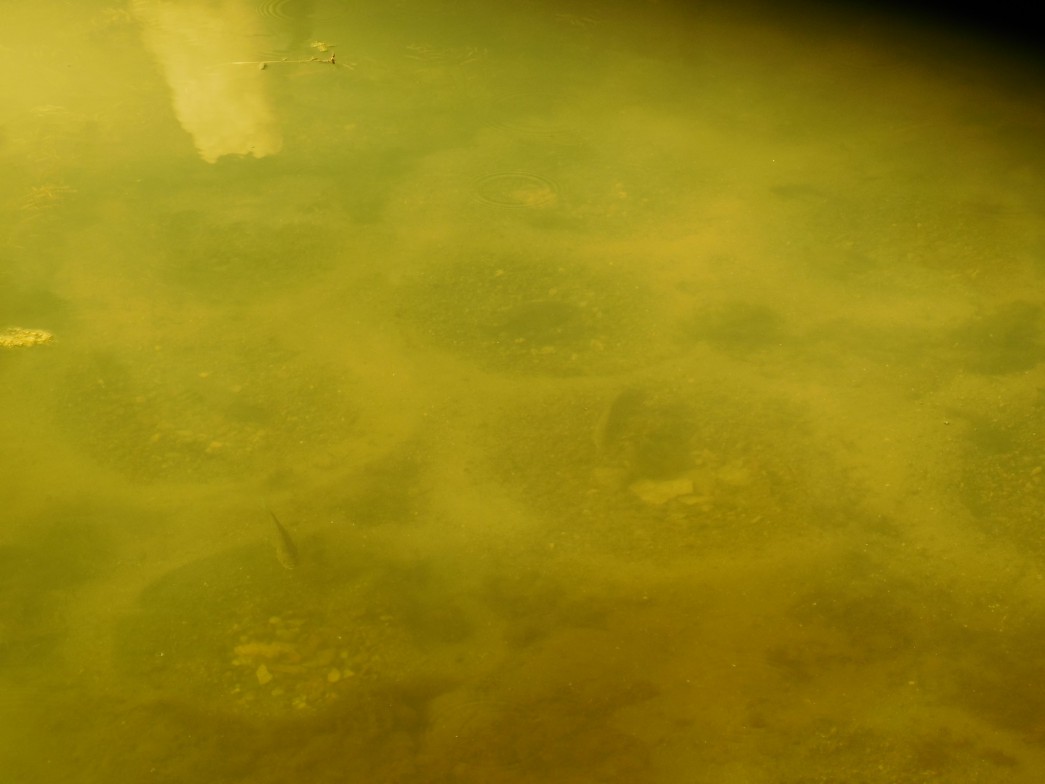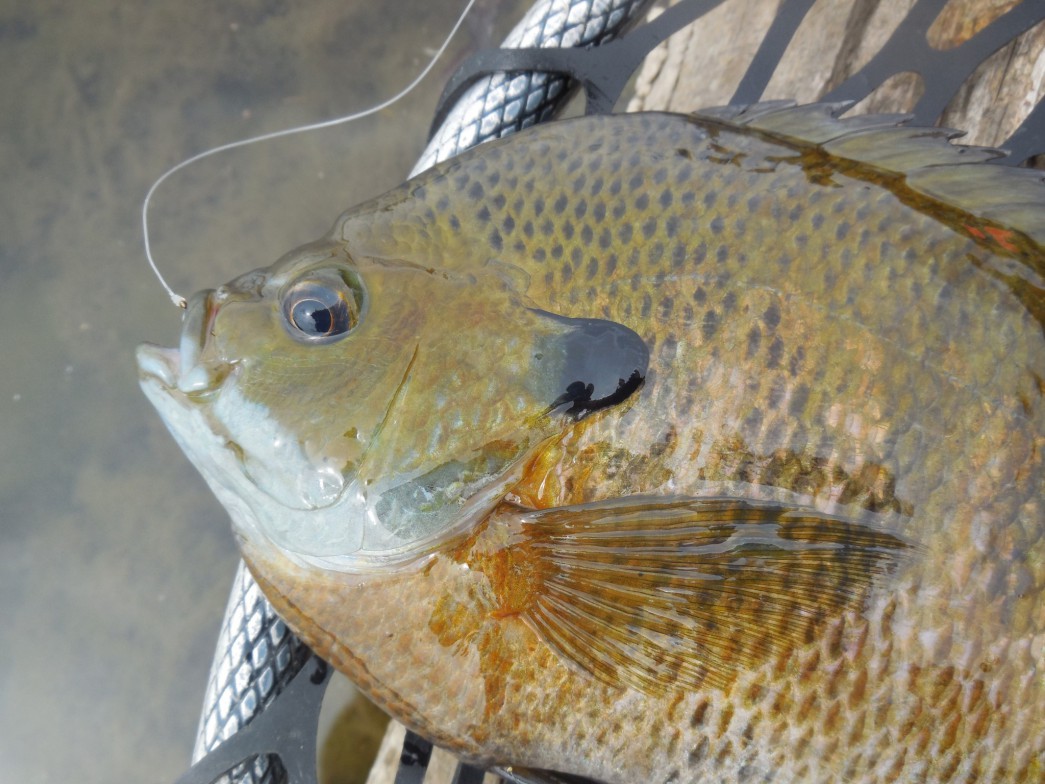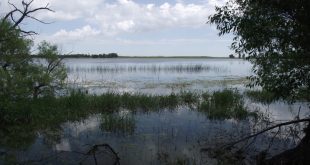I have pursued, and caught, some of the biggest, baddest fish that swim Nebraska waters. Spending hours, even days fishing hard with little to show for it knowing that the one fish I might catch could be huge is not a problem–love fishing like that every chance I get. But, I also love a little more action and a return to my roots, the same roots most of us anglers share, sitting on a shoreline dabbling bobbers and baits in front of some “sunfish”. I love the variety, and I never tire of fishing because there are so many different fish to catch. I love them all. This is the time of year I always make a point to find a good bluegill hole and spend some time watching the spawning antics of those fish and drying off a few big ‘gills in the process. Right now the bluegills are on their spawn beds in many Nebraska waters.
As is true with all of our North American sunfish species, male bluegills excavate the spawning beds. In most waters, when the bluegills are spawning, you can spot the cluster of “craters” in shallow water that are a sure sign of a bluegill spawning colony.


One big reason I enjoy fishing for some bluegills during their spawn period is just being able to watch the antics of the fish. Their behavior changes dramatically throughout the period. A week or so ago the male bluegills we found were just moving up into shallow water and starting to excavate spawn beds. Those fish were incredibly spooky and darned near impossible to catch. On that day my daughter finally found a pocket of fish that were not starting their spawning activities and therefore were much more interested in feeding and were much easier to catch. A few days later I found a lot more male bluegills on spawn beds and those fish were much more “anchored” to the spawning beds they had excavated and were guarding.
I will always tell you that spawning fish, regardless of species, are not easy to catch because they have things other than feeding on their mind. During the spawn, reproduction dictates the behavior of fish instead of the need to find and capture prey that dictates their behavior most of the time. Many anglers believe fishing during the spawn is one of the best times to catch big bluegills, and there is some truth to that because the fish can be located more easily, visibly seen in most cases. However, in the middle of the spawn, male bluegills can be so focused on guarding their nest, chasing off other males, and trying to herd a willing female in to spawn with them, that they do not even notice baits fished within inches of them. Fishing for bluegills during the spawn can be very challenging, very technical, because to get fish to bite you might have to keep baits right on their noses for some length of time. Fly-fishing is a very effective technique for that type of fishing and bluegills will eat a variety of relatively small, “buggy”-looking flies. Good ole-fashioned cane poles are still a great way to catch fish too!
I typically release all of the bluegills I catch while targeting them during the spawn. With the fish being so easy to see, anglers can literally “cherry-pick” some of the biggest bluegills from a population during the spawn period. I have seen way more panfish populations in Nebraska waters suffering from the effects of over-harvest (populations dominated by small fish), than I have seen populations of larger sport fish, even walleyes, that were being over-harvested. Large bluegills, large panfish, are rare fish and unfortunately anglers target large panfish–when the big ones are gone, all that is left are a lot of small panfish.
Catch & release is even more important with bluegills because of the unique reproductive biology of those fish. Big male bluegills that build and guard the nests are faster-growing fish. It is an advantage for those bluegills to quickly grow large because bigger males can more easily defend the most-favored spawning locations. At the same time, there are other males in bluegill populations whose spawning strategy involves staying small, mimicking a female bluegill in size and appearance, and then sneaking in with a female to spawn on a bed guarded by one of the big males. The big male guarding a spawn bed thinks he has hit the jackpot by having more than one female join him to spawn when in reality one of those “females” is a female-imitating male! “Sneaker” males do not care if they ever grow up because they pass their genes to future generations by staying small, looking and acting like females. You can read more about that unique spawning behavior in this old blog post, Sneakers and Guarders, but the bottom line is this: If anglers harvest the larger, nest-guarding males from a bluegill population, what is left will be slower-growing and much less likely to reach quality or even trophy size.
I mentioned that a fly rod or even cane pole can still be the best tools for certain fishing situations like spawn-time bluegills. I will also refer to another old blog post and tell you that the Kid’s System works really well too.
Notice the aquatic vegetation behind my daughter in this picture: Sometimes you have to go right in after them, and They Ain’t “Weeds”.

 Nebraskaland Magazine
Nebraskaland Magazine




